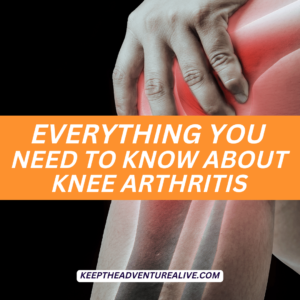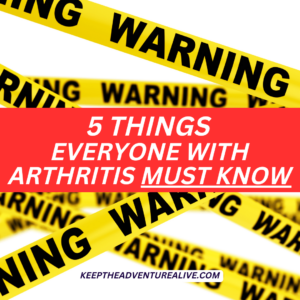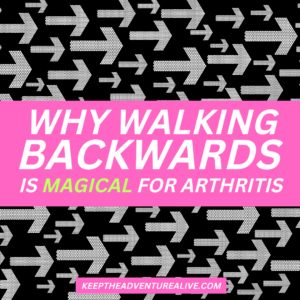Hip pain when walking can limit the distance you’re able to go, the speed at which you can move as well as your enjoyment when walking. Hip arthritis can be a common cause of pain when walking but there is good news. With three simple strategies you can not only reduce hip pain but you can also reduce muscle tightness that can make walking like you used to much more difficult.
What causes hip pain when walking?
There can be various contributors to hip pain when walking but there are some common reasons I have noticed as a physical therapist and osteoarthritis specialist:
- Muscle imbalance: certain muscles are overworked while other muscles aren’t used enough due to the way you move or a weakness that may be present.
- Muscle tightness/stiffness: tight muscles can influence the way your joints move. They can fuel compensations especially when walking.
- Lack of balance: feeling unsteady on your feet can change your walking pattern and can contribute to hip pain when walking.
Three strategies to reduce pain
A few things before diving into these strategies…
Understand that consistency is key and you may not experience immediate results. As much as I would love to wave a magic wand for you to make your pain disappear, it is possible (..yet 😜).
When it comes to building the support around your joint and managing your symptoms, it can take time. Don’t give up too early! Many people stop right before they experience huge breakthroughs. I don’t want the same to happen to you. Commit to one or all of these strategies for the next 3-6 months.
Also, understand that since pain can be caused by a few different variables, you may need a few different strategies to help. If you feel like you have been stuck with the same exercise routine or have been trying to same stretches everyday- I’m glad you’re here because it’s time to mix it up to maximize progress!
1. Proper Warm-Up
Now this may sound simple, but in order to help reduce hip pain when walking- a proper warm up is key. But, I don’t mean static stretching…
Oftentimes, stretching can help in the short term but it tends to be very brief. With hip osteoarthritis, you can be more prone to muscle tightness and stiffness. Stretching may not be bringing you the benefits you think it is.
Get the BEST bang for your buck by incorporating movement into your warm up.
Movement has superior benefits over stretching including:
- improved blood flow
- longer term mobility gains
- increased confidence
- pain reduction
The KEY is making sure these movements don’t increase pain. If you are increasing pain before you go out on a walk, odds are walking won’t feel great.
When thinking about warm-up exercises, think about moving your hip in the three primary directions it’s meant to. These directions include forward, sideways and backwards.
Moving in each of these directions can help to activate the muscles that are responsible for these movements, plus they are also responsible for supporting the hip joint when walking.
Simply choosing 3-4 movements can be an effective warm up to make a change to hip pain when walking.
A few examples of movements you can incorporate into your warm-up include:
15-60 seconds each side of heel-toe balance exercise
10-20 isolated side steps each side, using upper body support as needed
2. Don't forget about the feet and ankles
Your feet and ankles are incredibly important when looking at reducing hip pain when walking. Unfortunately, they tend to be neglected in most warm ups and exercise routines.
Especially if you have foot or ankle arthritis– it becomes even more important.
Make sure you are strengthening these joints to help you reduce pain when walking. These simple movements can be incorporated into your warm-up and in your regular strength routine.
Your feet are the first parts of your body to make contact with the ground with each step. Without the appropriate strength and mobility, it can impact the way you move which can trickle the effects all the way up to your hip.
⚠️ If you don’t have a regular strength training routine, you need one. Adventurers for Life, our membership gives you step by step workouts to build strength in the right areas, balance, and a stamina you need without increasing joint pain ⚠️
Here are a few examples you can use to strengthen your feet and ankles:
10-30 seated heel raises
5-12 repetitions of foot doming each side:
Inside of Adventurers for Life, there is also a 15 minute foot mobility and strengthening follow along workout, available in the Workout Library.
3. Utilize breaks when walking
When you’re walking, taking breaks can be very helpful to prevent overstressing the hip joint, especially with hip osteoarthritis. One way I encourage people to do this is to choose one or two simple movements you can have in your toolbox to help.
In attempts to reduce hip pain when walking, you can delay or even present the onset by staying on top of it when out walking.
Even if you are out grocery shopping, running errands or just going for a leisurely walk- quick movements can help to make these tasks much easier.
With breaks, I don’t necessarily mean sitting down and resting. Although there can be a time and a place for complete rest, active rest can also be helpful to your hip joint.
Using these breaks can help you to increase your walking distance, speed and stamina.
The frequency of breaks will depend on how quickly your pain or stiffness comes on.
10-30 repetitions of hip swings:
8-12 repetitions of hip circles, using upper body support as needed:
Conclusion
There is hope if you experience hip pain when walking. These three strategies can help you to actually enjoy walking again. Remember, you may need a combination of these to effectively reduce pain.
With hip osteoarthritis, as much as you can prevent pain and stiffness, the better off you’ll be. The best way to do this is to find movements that make you feel BETTER, not worse.
If you want to get on the fast track to reduce hip pain when walking, climbing up/down stairs, getting up/down from the floor and MORE- Adventurers for Life is the exact path you need.
By becoming a member, this could be you:
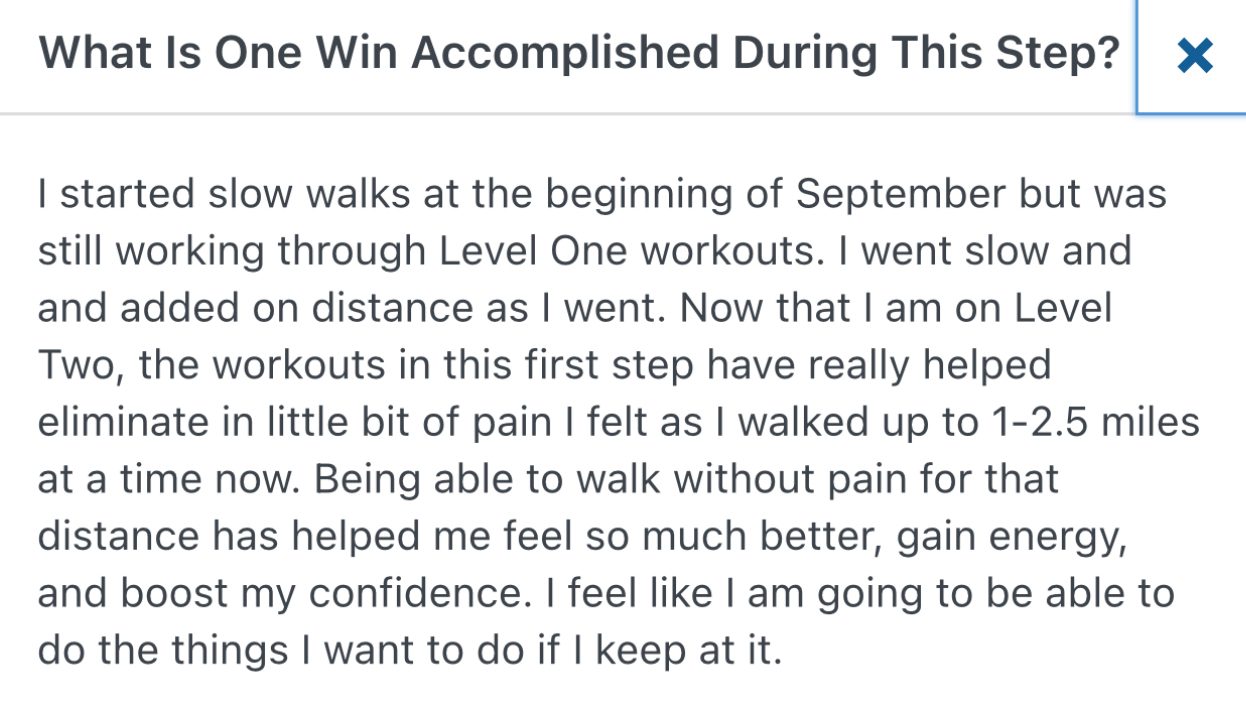
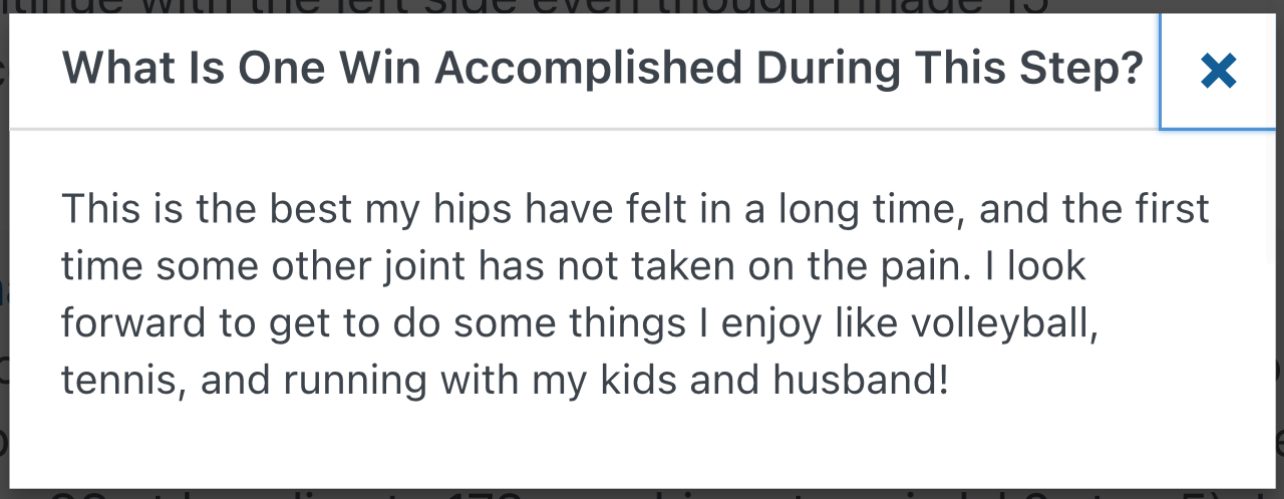
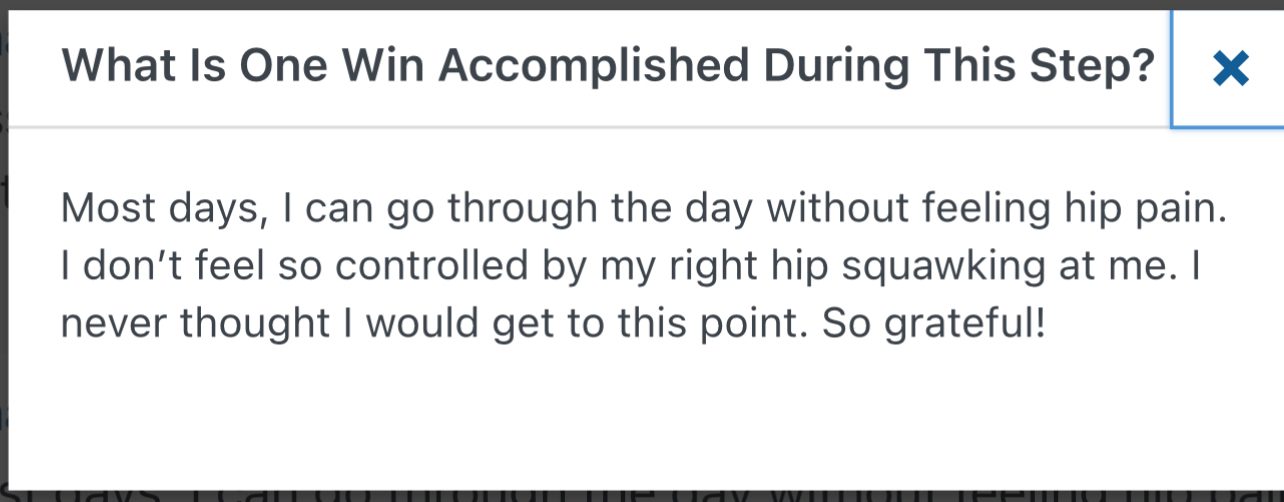
Alyssa Kuhn
Disclaimer: This post is for general informational purposes only. It should not be used to self-diagnose and it is not a substitute for a medical exam, cure, treatment, diagnosis, and prescription or recommendation. It does not create a doctor-patient relationship between Dr. Kuhn and you. You should not make any change in your health regimen or diet before first consulting a physician and obtaining a medical exam, diagnosis, and recommendation. Move Well Age Well, LLC and Dr. Alyssa Kuhn, PT, DPT are not liable or responsible for any advice, course of treatment, diagnosis or any conclusions drawn, services or product you obtain through this post, video or site. Complete all exercises at your own risk.

